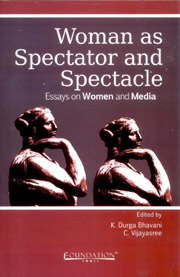Book contents
- Frontmatter
- Contents
- Notes on Contributors
- Preface
- Introduction
- Part I Media and Gender (In)Justice
- 1 Wanted: A Gender Perspective on Media Globalisation
- 2 Media Texts for Women by Women
- 3 Media-ting ‘Patriarchy’
- 4 The Endangered Gender: Images of Women in Advertisements
- 5 Woman in Visual Media: The Spectator vs. the Spectacle
- 6 Two Faces of Women on Television: Need for a Gender Policy
- Part II Framing Women
2 - Media Texts for Women by Women
from Part I - Media and Gender (In)Justice
Published online by Cambridge University Press: 05 November 2011
- Frontmatter
- Contents
- Notes on Contributors
- Preface
- Introduction
- Part I Media and Gender (In)Justice
- 1 Wanted: A Gender Perspective on Media Globalisation
- 2 Media Texts for Women by Women
- 3 Media-ting ‘Patriarchy’
- 4 The Endangered Gender: Images of Women in Advertisements
- 5 Woman in Visual Media: The Spectator vs. the Spectacle
- 6 Two Faces of Women on Television: Need for a Gender Policy
- Part II Framing Women
Summary
There is an interesting contrast between the fictional portrait of women in media and the roles they play in the creation of media texts. In this essay, I shall speculate on the reasons for this divide and on ways to bridge it creatively, taking examples from television.
Women in Soap Operas
Let us consider the fictional portraits first. Much analysis of the portrayal of women in the media confines itself to the vapid and insensitive characters created for popular soap operas by poor writers (or by cynical teams of uncoordinated writers). One is unsure if any of the writers of these soap operas are actually women, although there does seem to be at least one woman producer behind these serials. If we are to move away from saasbahu and family sagas which often seem completely unreal, we need to have authentic writers who know the contexts that they are writing about – some of these may be men, but surely there would be a majority of women writers here.
This is not to say that we should not have saas-bahu sagas. The fact that they have an audience suggests the relevance of the theme. Human relationship is the broad area of the soap opera – human relationships rooted in local realities. Infidelity, loss, honour, society, family – these are also the themes of the great classic novels.
- Type
- Chapter
- Information
- Woman as Spectator and SpectacleEssays on Women and Media, pp. 16 - 24Publisher: Foundation BooksPrint publication year: 2010

